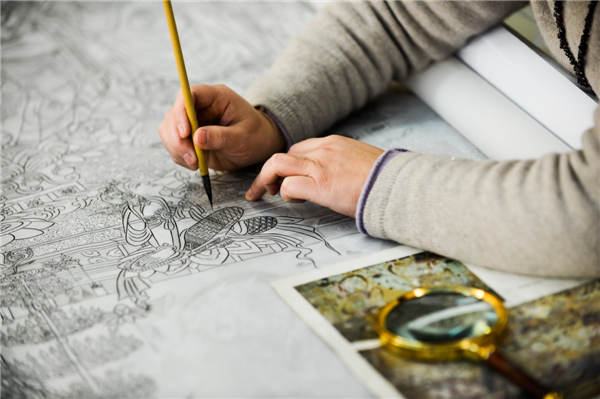 |
| Yang sketches a mural before painting it on the wall. (Photos by Liu Xiao / Xinhua) |
Two artists have dedicated their lives to reproducing the Dunhuang murals, capturing some of the glory of the Tang Dynasty. Ma Lie and Lu Hongyan report from Xi'an, Shaanxi province.
Yang Dongmiao and her husband Jin Weidong are happy and excited - their dream of reproducing full-sized Dunhuang murals is going to come true. "We plan to open our caves to the public on Feb 25, after we finish the murals of the No 45 and No 220 grottoes of the Mogao Grottoes," Jin says. The couple is busy putting the final touches on the murals in their two "grottoes" located on a street that celebrates the heritage of the Silk Road in Xi'an, capital of Shaanxi province.
Some 320 square meters of murals, similar in size to those in the Mogao Grottoes, a UNESCO world heritage in Dunhuang, Northwest China's Gansu province, are almost complete.
The Mogao Grottoes, that date as far back as AD 366, contain more than 45,000 square meters of murals in 735 caves. The grottoes are among the best-preserved Buddhist art treasures in the world.
Yang and Jin started their reproduction of the ancient murals in the two grottoes in 2011, as part of a tourism project to recreate some of the glory of the Tang Dynasty (AD 618 - 907), China's most prosperous dynasty which chose Xi'an (known as Chang'an in ancient times) as its capital.
"We got the opportunity and financial support from the project developer to realize our long-held dream of completely reproducing the full-size murals in the No 45 and No 220 caves," Yang says.
